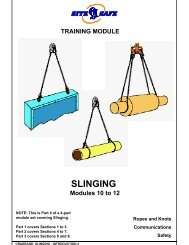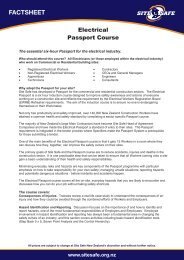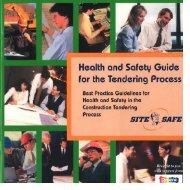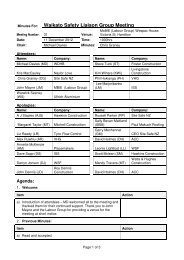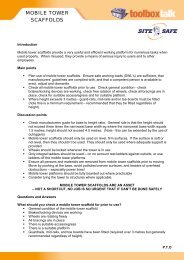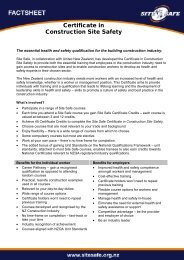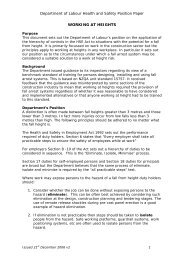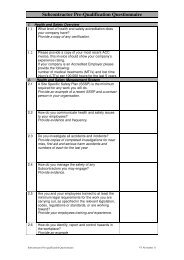Create successful ePaper yourself
Turn your PDF publications into a flip-book with our unique Google optimized e-Paper software.
GOOD SLINGING PRACTICE<br />
BASIC RULES ... 4<br />
4.2. KNOW HOW TO WORK OUT SLING LOADS.<br />
This formula is very accurate, and allows you to use a tape measure for calculations,<br />
rather than having to use degrees and angles.<br />
The formula is: T = W x L<br />
N V<br />
T = Tension per leg in kg<br />
W = weight in kg<br />
N = number of legs<br />
L = sling length in metres<br />
V = vertical height in metres<br />
Example:<br />
W = weight = 5,000 kg<br />
N = No. of legs = 2<br />
V = vertical height = 2 metres<br />
L = sling length = 3.5 metres<br />
T = 5000 kg x 3.5<br />
2 2<br />
=<br />
17,500<br />
4<br />
L = Length<br />
= 4,375 kg per leg.<br />
You would need a two-legged sling rated at 5,000kg WLL capacity per leg.<br />
W = weight<br />
This formula will work for any number of sling legs, but as we all know, a four leg sling<br />
system can often mean that only two legs are carrying all the weight, with the other two<br />
legs doing little more than acting as balancing legs.<br />
Refer to Sheets 4.5 and 4.6 for details of four-leg slings.<br />
Therefore, use the formula based on TWO legs only, to make sure that you are on the<br />
safe side.<br />
It's too late to be checking your calculations when the load has<br />
fallen to the ground.<br />
CRANEAGE - SLINGING: BASICS PAGE 3<br />
V =<br />
Height




